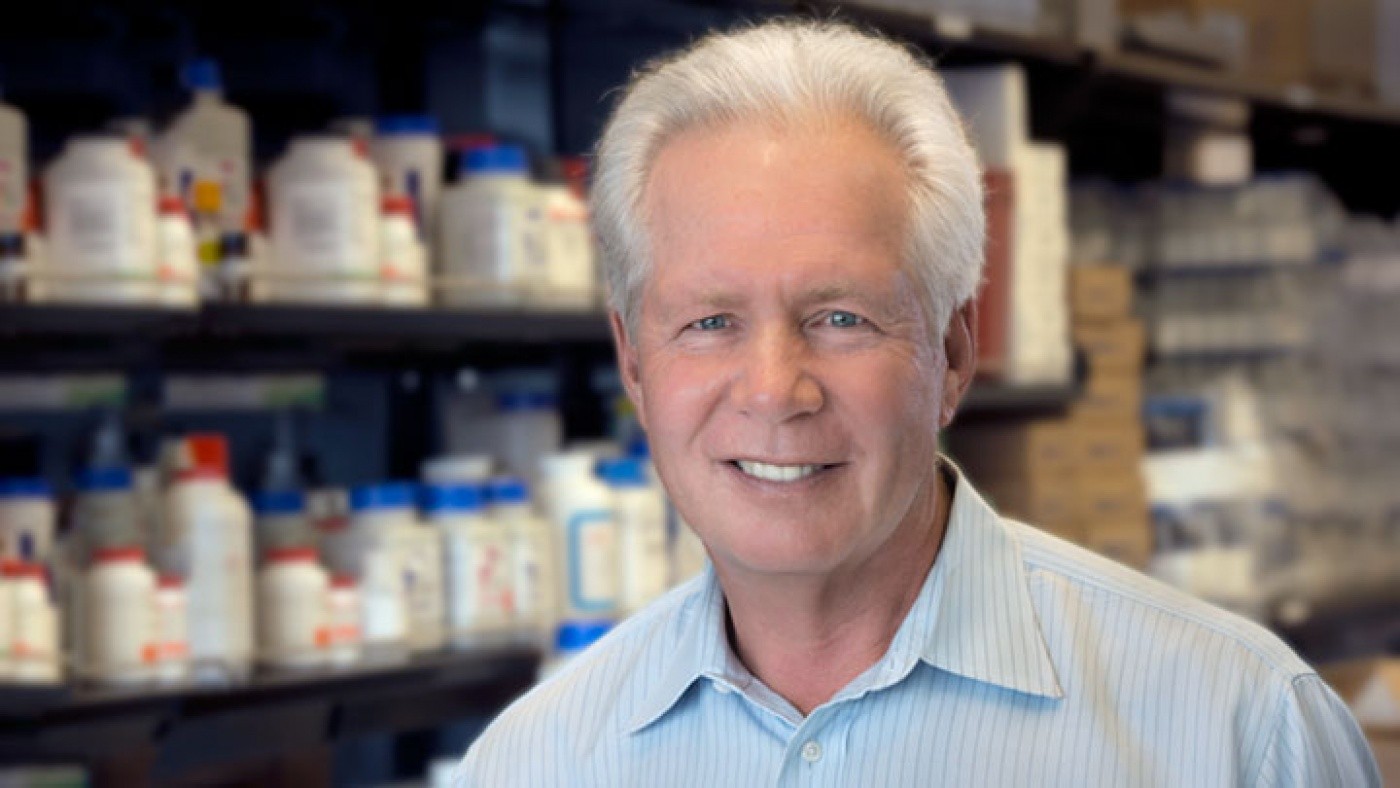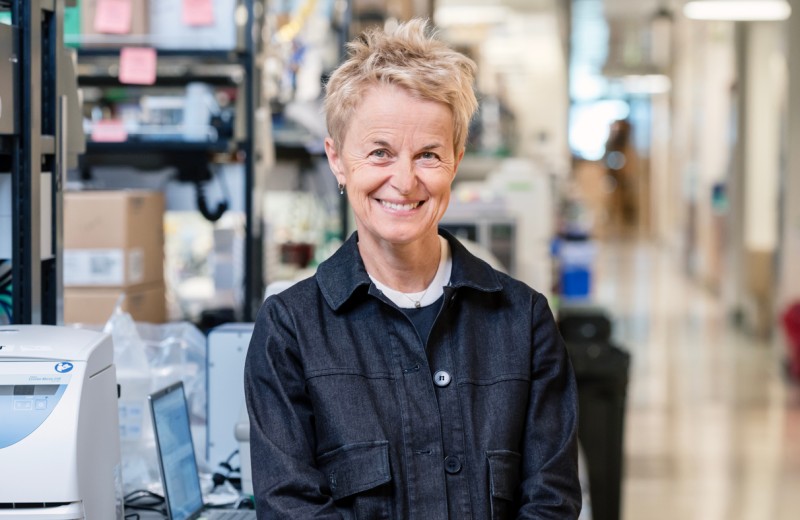Gladstone NOW: The Campaign Join Us on the Journey✕

Dr. Warner Greene writes about exciting advances made in the study of HIV that may hold the promise for better treatments or even a cure for the virus. [Photo: Chris Goodfellow]
After studying HIV for more than 30 years, I didn’t expect to be surprised. However, recent research at the Gladstone Institutes has radically changed our fundamental understanding of how HIV works. Our discoveries have revealed new information that may lead to treatment options we’ve never before considered.
The Journey Begins
In 1981, I was part of a team that treated the first patient presenting with AIDS at the National Institutes of Health. We had never seen anything like it: a total collapse of immune system function.
Within 5 years, HIV was identified as the virus that causes AIDS, but there were still no effective treatments. All of the patients I was caring for at San Francisco General Hospital ultimately died, and there was nothing we could do about it.
At that time, we understood very little about how HIV damaged the immune system and led to AIDS. All we knew was that our patients had lost almost all their CD4 T cells, the immune system’s “command and control center.” If you want to cripple the immune system, these are the cells to destroy.
For nearly 30 years, the research community believed that the virus actively killed CD4 T cells. The theory was that HIV entered CD4 T cells and hijacked the cells’ genetic machinery in order to make new copies. This act of turning T cells into HIV factories eventually killed the cells, resulting in AIDS.
However, a few years ago, my colleagues and I asked a very simple question: How, exactly, does HIV kill CD4 T cells? The exploration led us from one surprise to another.
Twists and Turns
HIV needs cells to be “active” in order to turn them into virus factories. Surprisingly, though, most of the CD4 T cells encountered by the virus are “resting,” making them inhospitable hosts. If the virus tries to infect these resting cells, the process grinds to a halt as viral RNA is being converted into DNA. This leaves fragments of viral DNA in the cells. Unexpectedly, these resting cells detect this foreign DNA and launch an innate immune response, which ultimately leads to a fiery form of the cell’s own death.
This cell suicide is intended to stop the virus from spreading to the rest of the body. However, instead of protecting against further infection, this action fuels the spread of HIV by attracting new CD4 T cells to the zone of inflammation, perpetuating the cycle of abortive infection and cell death. In other words, AIDS is not caused by the direct action of HIV on the immune system; it is caused by our body’s ancient, built-in defense against viral infections. For HIV, this protective process is like throwing gas on a fire.
These findings have sharply shifted our understanding of how HIV causes AIDS and we now have new frontiers to explore. For example, we’ve always treated HIV infection with medicines that directly target the virus. What if, instead, we also find a way to stop T cells from self-destructing?
As it turns out, there are already drugs that effectively short-circuit this form of cellular suicide. They are called caspase 1 inhibitors, and, fortuitously, one such drug has been shown to be safe and well-tolerated in people.
With our collaborators, we are now exploring whether caspase 1 inhibitors can protect T cells in animal models of HIV, and what we’ve seen so far is encouraging. Our sights are now set on testing these medicines in people with HIV. We are excited about the prospect of stopping CD4 T cell suicide because it is the loss of these cells that underlies the progression to AIDS. We can see the potential for these new drugs in combination with existing anti-retroviral therapy, creating a truly effective drug cocktail.
Hide and Seek
Our ultimate goal goes beyond identifying new treatments for HIV; we seek a cure for the more than 35 million people infected with HIV around the world.
A cure has proven elusive in part because the virus is so good at hiding in the body. In roughly one out of every million infected CD4 T cells, HIV goes silent—a state known as viral latency—and no new viruses are manufactured. Existing medicines, like anti-retroviral therapies, only work when HIV is actively replicating, so they are unable to eliminate the hibernating virus. This leaves a reservoir of infected cells in the body that rekindles the infection if anti-retroviral therapies are discontinued.
My colleagues and I at Gladstone are exploring how to reactivate the latent virus through creative research avenues and are finding promising leads. Once the virus is active, anti-retroviral therapies can be used to block the spread of HIV while other approaches are used to ensure the reservoir cells die. This so-called “shock and kill” approach has the potential to become a key battle tactic for those already infected with HIV and could improve chances for a cure.
A Solution May Be in Sight
Since 1981, when I saw my first patient, we have made tremendous progress in controlling the disease and keeping people who are infected with HIV alive. However, all these years later, we still don’t have a vaccine or a practical cure, and we need a solution that is scalable for developing countries, too.
As I write this, over 35 million people worldwide are living with HIV, and an estimated 2.1 million new cases are diagnosed every year. What’s more, we lose more than 4,100 people to AIDS every single day. We are making progress on some fronts; but in places like sub-Saharan Africa, viral hotspots remain.
Some people are satisfied with the progress made to date. For me, however, recent discoveries at Gladstone are evidence that continuing to ask basic scientific questions about HIV will uncover new paths with great potential to direct us to a cure. We stand ready to translate these discoveries into practical solutions. I’m excited about the road we are on and convinced that solutions may well be around the next bend. We will know we’ve arrived at our destination when no one in the world has to live with HIV, or die of AIDS.
Warner C. Greene, MD, PhD, is the founding Director and the Nick and Sue Hellmann Distinguished Professor of the Gladstone Institute of Virology and Immunology. He is also a Professor of Medicine, Microbiology and Immunology at the University of California, San Francisco (UCSF) and is co-director of the UCSF-Gladstone Center for AIDS Research and Executive Chairman of the Accordia Global Health Foundation.
Support Our COVID-19 Research Efforts
Gladstone scientists are moving quickly to respond to the coronavirus outbreak. Help us end this pandemic.
Beyond Viruses: Expanding the Fight Against Infectious Diseases
Beyond Viruses: Expanding the Fight Against Infectious Diseases
The newly renamed Gladstone Infectious Disease Institute broadens its mission to address global health threats ranging from antibiotic resistance to infections that cause chronic diseases.
Institutional News News Release Cancer COVID-19 Hepatitis C HIV/AIDS Zika Virus Infectious DiseaseCharting the Body’s Defense Against HIV Leads to Broader Immune Revelations
Charting the Body’s Defense Against HIV Leads to Broader Immune Revelations
Gladstone scientists created a new tool to understand the immune system’s inner workings when confronted with a virus.
Research (Publication) HIV/AIDS Infectious Disease Roan LabThe Audacity of Hope: Stories of Resilience and Empowerment | World AIDS Day 2024
The Audacity of Hope: Stories of Resilience and Empowerment | World AIDS Day 2024
Rewatch The Audacity of Hope, a powerful webinar hosted in honor of World AIDS Day 2024.
HIV/AIDS Ott Lab



